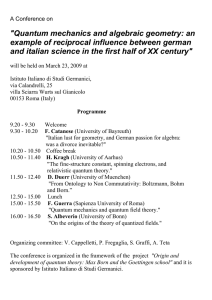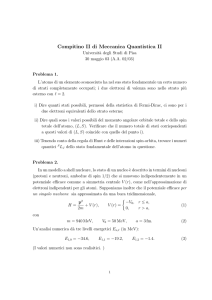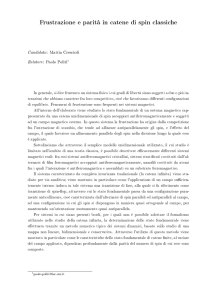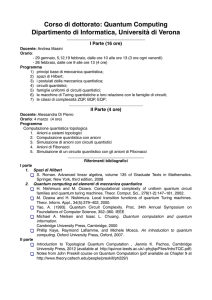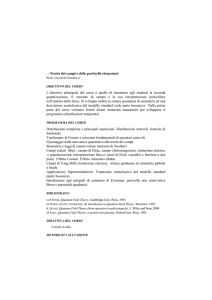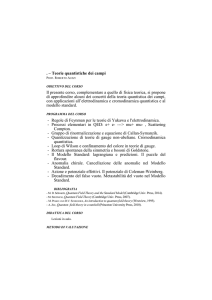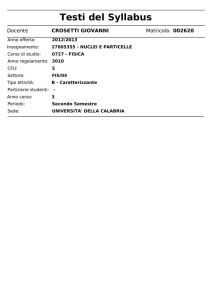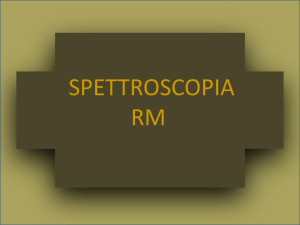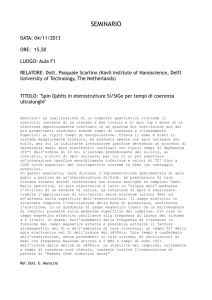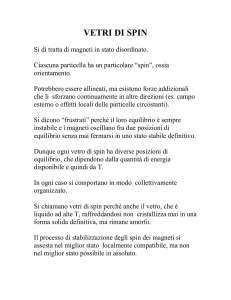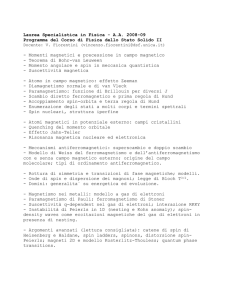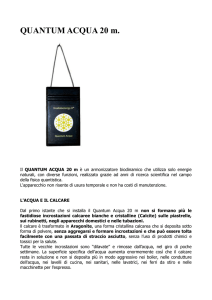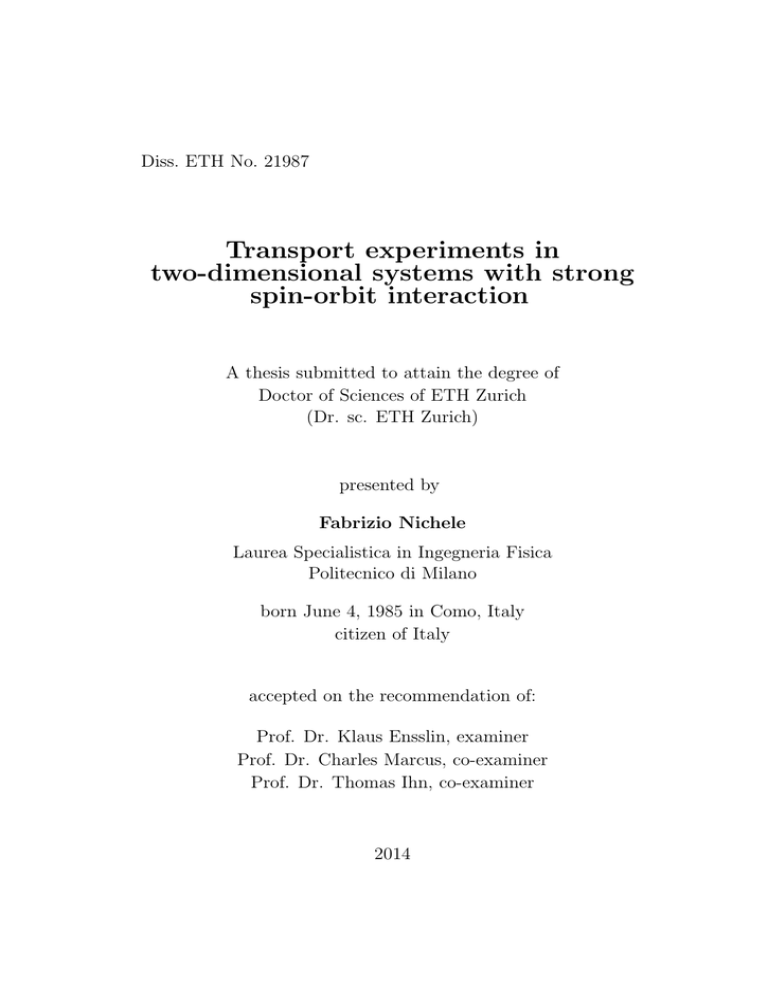
Diss. ETH No. 21987
Transport experiments in
two-dimensional systems with strong
spin-orbit interaction
A thesis submitted to attain the degree of
Doctor of Sciences of ETH Zurich
(Dr. sc. ETH Zurich)
presented by
Fabrizio Nichele
Laurea Specialistica in Ingegneria Fisica
Politecnico di Milano
born June 4, 1985 in Como, Italy
citizen of Italy
accepted on the recommendation of:
Prof. Dr. Klaus Ensslin, examiner
Prof. Dr. Charles Marcus, co-examiner
Prof. Dr. Thomas Ihn, co-examiner
2014
Abstract
We experimentally investigate low temperature electronic transport phenomena in
two-dimensional semiconductors characterized by strong spin-orbit interaction. The
subjects of our studies are two-dimensional hole gases in p-type GaAs/AlGaAs
heterostructures and tunable electron/hole systems in InAs/GaSb double quantum
wells. A brief introduction about the physics of these two material systems is given
in Chapter 2. Chapter 3 describes the processing techniques used to fabricate the
samples studied in the thesis.
Low temperature experiments in GaAs two-dimensional hole gasses reveal an
extremely rich physics, where spin-orbit, coherence and hole-hole interaction effects
compete with each other. This thesis work describes how spin-orbit interaction
affects hole transport in a variety of situations, from diffusive quantum transport to
transport in ballistic, coherent or chaotic nanostructures.
In Chapter 4 we focus on diffusive transport in gated Hall bars, where spinorbit interaction results in peculiar magnetotransport phenomena. We observe and
analyze Shubnikov-de Haas oscillations, classical positive magnetoresistance, weak
anti-localization and hole-hole interaction corrections. In Chapter 5, from the temperature dependence of the Shubnikov-de Haas oscillations we separately extract the
effective masses of the two spin-orbit split subbands as a function of hole density.
We measure a very pronounced spin-orbit induced non-parabolicity of the valence
band and we show that the hole effective mass varies up to a factor of three for the
two angular momentum eigenstates.
In Chapter 6 we characterize high quality quantum point contacts embedded in
p-type GaAs. Spin-orbit interaction results in a strong anisotropy of the effective
Landé g-factor: the application of an external magnetic field splits the energy levels
according to the relative orientation between electrical current and magnetic field.
On top of this effect, we observe crossings or anti-crossings among energy levels
according to their spin quantum number and external magnetic field orientation.
We reconcile this observation with a spin-orbit Hamiltonian for heavy holes that
contains the well know cubic-in-k Rashba term and a recently proposed quadraticin-k term. The existence of the quadratic term allows to explain the increasing
tendency of the in-plane g-factor with quantum point contact subband index.
Using three quantum point contacts we form a mesoscopic cavity in p-type GaAs.
i
The cavity size is smaller than the hole elastic mean free path and coherence length,
but two orders of magnitude longer than the spin-orbit length. In such a cavity spin
rotational symmetry is completely broken, and spin currents can be generated at zero
magnetic field via spin-orbit interaction. In Chapter 7, using a recently proposed
measurement scheme, we give evidence for the existence of a pure spin current at
zero magnetic field. Nor the generation or the detection technique involve the use
of ferromagnetic contacts, large magnetic fields or optical spin injection techniques.
Spin-orbit interaction is also expected to leave signatures in the coherent transport of holes in a ring shaped nanostructures. In Chapter 8 we present measurements
of highly visible h/e and h/2e oscillations in Aharonov-Bohm rings. Similarly to previous works we observe the presence of beatings in the h/e and h/2e oscillations that
have occasionally been interpreted as signature of spin-orbit interaction. We propose an additional interpretation for the beatings that does not involve spin-orbit
interaction but the combined effect of Aharonov-Bohm oscillations and conductance
fluctuations. The phase of h/2e oscillations as a function of a gate voltage does
not show phase jumps, contrary from what is expected from the Aharonov-Casher
effect. We discuss the temperature dependence of the beatings in terms of phase
breaking and ensemble averaging.
InAs/GaSb double quantum wells are ambipolar systems where a two-dimensional
electron gas can coexist in close proximity with a two-dimensional hole gas. When
the electron density is approximately equal to the hole density, the two systems can
hybridize opening a small energy gap. When the Fermi energy lies in the hybridization gap, the system turns insulating in the bulk and, interestingly, one-dimensional
helical states form at the same edges.
In Chapter 9 we characterize InAs/GaSb quantum wells as a function of charge
density and magnetic field, analyzing the low-field magnetoresistance and the Shubnikovde Haas oscillations. We give evidences for the presence of two subbands in InAs for
low electron density. For high electron density the effective mass increases, revealing
the expected band non-parabolicity of InAs. Close to the charge neutrality point,
we measure distinct signatures of the simultaneous presence of electron and hole
bands.
In Chapter 10 we treat the behavior of InAs/GaSb QWs in a high perpendicular
magnetic field. At the electron-hole crossover, a strong increase in the sample longitudinal resistivity is found in a large perpendicular magnetic field. Concomitantly
with a local resistance exceeding the resistance quantum by an order of magnitude,
we find a pronounced non-local resistance of similar magnitude. The coexistence
of the two effects is reconciled in a model where counter-propagating and highly
dissipative quantum Hall edge channels coexist with a weakly conductive bulk.
ii
Riassunto
In questa tesi investighiamo sperimentalmente il trasporto elettronico a bassa temperatura in semiconduttori bidimensionali caratterizzati da un forte effetto spinorbita. I soggetti delle nostre ricerche sono gas bidimensionali di lacune in eterostrutture drogate p di GaAs/AlGaAs e doppie quantum well in InAs/GaSb. Una rapida
introduzione sulla fisica di questi due materiali è presentata nel Capitolo 2. Il
Capitolo 3 descrive le tecniche sperimentali usate per fabbricare i campioni studiati nella tesi. A bassa temperatura, i gas bidimensionali di lacune rivelano una
fisica estremamente ricca dove effetti di spin-orbita, coerenza e interazione lacunalacuna competono tra loro. Questa tesi descrive come l’effetto spin-orbita influenza
il trasporto di lacune in una varietà di situazioni differenti, dal traporto diffusivo
quantistico al trasporto in strutture balistiche, coerenti o caotiche.
Il Capitolo 4 è dedicato al trasporto quantistico in strutture a Hall bar con gate,
dove l’effetto spin-orbita risulta nell’osservazione di fenomeni di trasporto molto
distinti. Misuriamo e analizziamo le oscillazioni di Shubnikov-de Haas, magnetoresistenza classica positiva, anti-localizzazione debole e interazioni lacuna-lacuna. Nel
Capitolo 5, dalla dipendenza dalla temperatura delle oscillazioni di Shubnikov-de
Haas, estraiamo separatamente i valori delle masse efficaci delle due sottobande
di spin in funzione della concentrazione di lacune. Misuriamo una non-parabolicità
molto pronunciata della banda di valenza e dimostriamo come la massa efficace delle
lacune possa variare fino a tre volte per i due autostati di momento angolare.
Nel capitolo 6 caratterizziamo contatti di punto quantici di elevata qualità in gas
bidimensionali di lacune. L’interazione spin-orbita risulta in una forte anisotropia
del fattore g di Landé: l’applicazione di un campo magnetico esterno separa i livelli
energetici a seconda dell’orientazione relativa tra la corrente elettrica e il campo
magnetico. In aggiunta a questo effetto, osserviamo attraversamenti o attraversamenti evitati tra stati energetici a seconda del loro numero quantico di spin e della
direzione del campo magnetico. Giustifichiamo queste osservazioni con una hamiltoniana di spin-orbita per lacune pesanti contenente il noto fattore Rashba cubico
e un fattore quadratico aggiuntivo recentemente proposto. L’esistenza del termine
quadratico permette di spiegare la tendenza a crescere del fattore g planare con il
numero di sottobande occupate nel contatto quantico.
Usando tre contatti di punto quantico formiamo una cavità mesoscopica in GaAs
drogato p. La dimensione della cavità è più piccola del cammino elastico medio di
iii
una lacuna e della lunghezza di coerenza, ma due ordini di grandezza più grande
della lunghezza di spin-orbita. In questa cavità, la simmetria rotazionale di spin
è completamente assente e correnti di spin possono essere generate in assenza di
campo magnetico tramite interazione di spin-orbita. Nel Capitolo 7, usando uno
schema di misura recentemente proposto, forniamo evidenze sperimentali riguardo
l’esistenza di una corrente di spin in assenza di campo magnetico. Né la generazione
né la misura richiedono l’uso di contatti ferromagnetici, elevanti campi magnetici o
tecniche ottiche di iniezione di spin.
É stato teorizzato come l’interazione spin-orbita lasci tracce nel trasporto coerente di lacune in una nonostruttura ad anello. Nel Capitolo 8 presentiamo misure di
oscillazioni h/e e h/2e altamente visibili in anelli di Aharonov-Bohm. Compatibilmente con studi precedenti, osserviamo la presenza di battimenti nelle oscillazioni
h/e e h/2e che, in certe occasioni, è stata interpretata come effetto dell’interazione
spin-orbita. Proponiamo un’interpretazione alternativa per i battimenti che non
richiede la presenza di interazione spin-orbita, ma l’effetto combinato delle oscillazioni di Aharonov-Bohm e delle fluttuazioni mesoscopiche della conducibilità. La
fase delle oscillazioni h/2e in funzione del potenziale di gate è costante, contrariamente da quanto previsto dall’effetto Aharonov-Casher. Discutiamo la dipendenza
dei battimenti dalla temperature in termini di perdita di fase e media di insieme.
Le doppie quantum well di InAs/GaSb sono sistemi ambipolari dove gas bidimensionali di elettroni possono coesistere in stretto contatto con gas bidimensionali
di lacune. Quando la densità di elettroni è simile alla densità di lacune, i due sistemi possono ibridizzare e portare all’apertura di una piccola gap energetica. Con
l’energia di Fermi nella gap di ibridizzazione, il sistema diventa isolante nel volume
e, allo stesso tempo, stati elicali monodimensionali si formano ai suoi bordi.
Nel Capito 9 caratterizziamo doppie quantum well di InAs/GaSb in funzione
della densità di carica e del campo magnetico attraverso l’analisi della magnetoresistanza per campo debole e delle oscillazioni di Shubnikov-de Haas. Per basse densità
elettroniche, evidenziamo la presenza di due sottobande nell’InAs. Per alte densità
elettroniche, riveliamo un aumento della massa efficace dell’elettrone, come atteso
dalla non-parabolicità della banda di conduzione dell’InAs. Nei pressi del punto
di carica neutrale, misuriamo chiare indicazioni riguardo la presenza simultanea di
bande di elettroni e di lacune.
Nel Capitolo 10 trattiamo il comportamento delle quantum well di InAs/GaSb
in un forte campo magnetico perpendicolare. Vicino al punto di neutralità di carica misuriamo un rilevante aumento della resistività. In concomitanza con una
resistenza locale superiore per un ordine di grandezza al quanto di resistenza, troviamo una resistenza non-locale di simile entitá. L’osservazione simultanea di questi
due fenomeni è spiegata in un modello dove stati di bordo propaganti in direzioni
opposte e altamente dissipativi coesistono con un volume debolmente conduttivo.
iv

